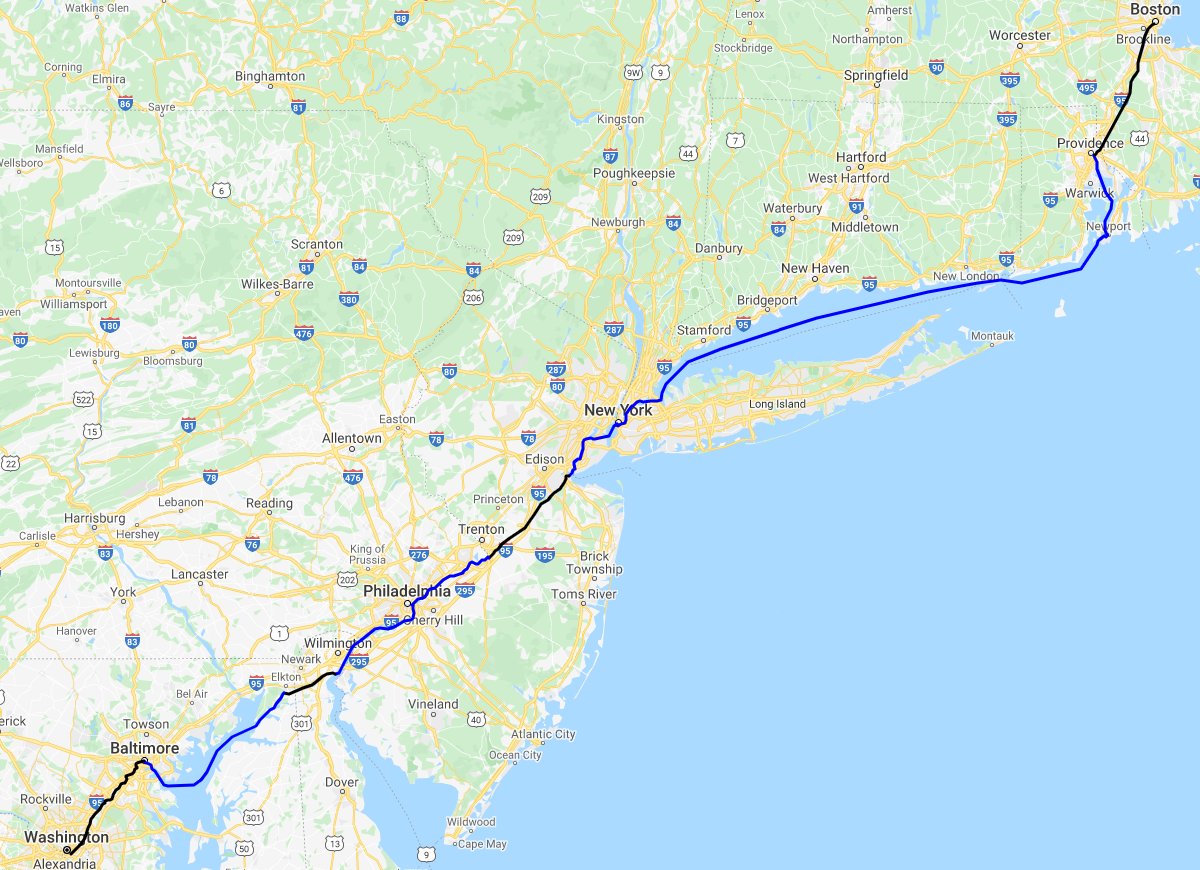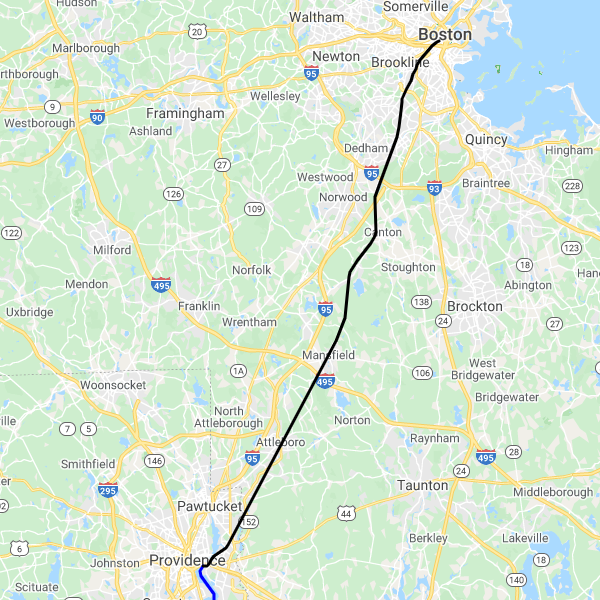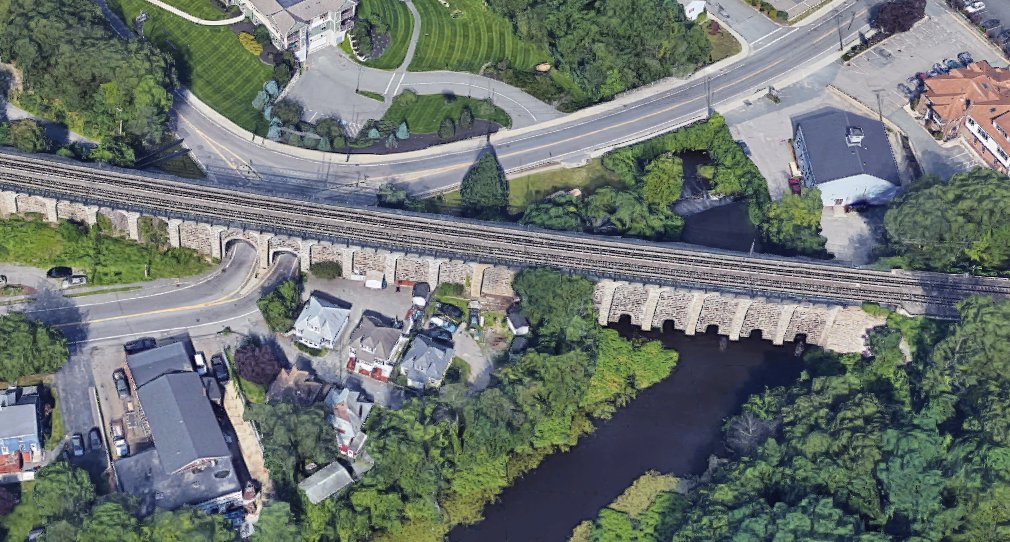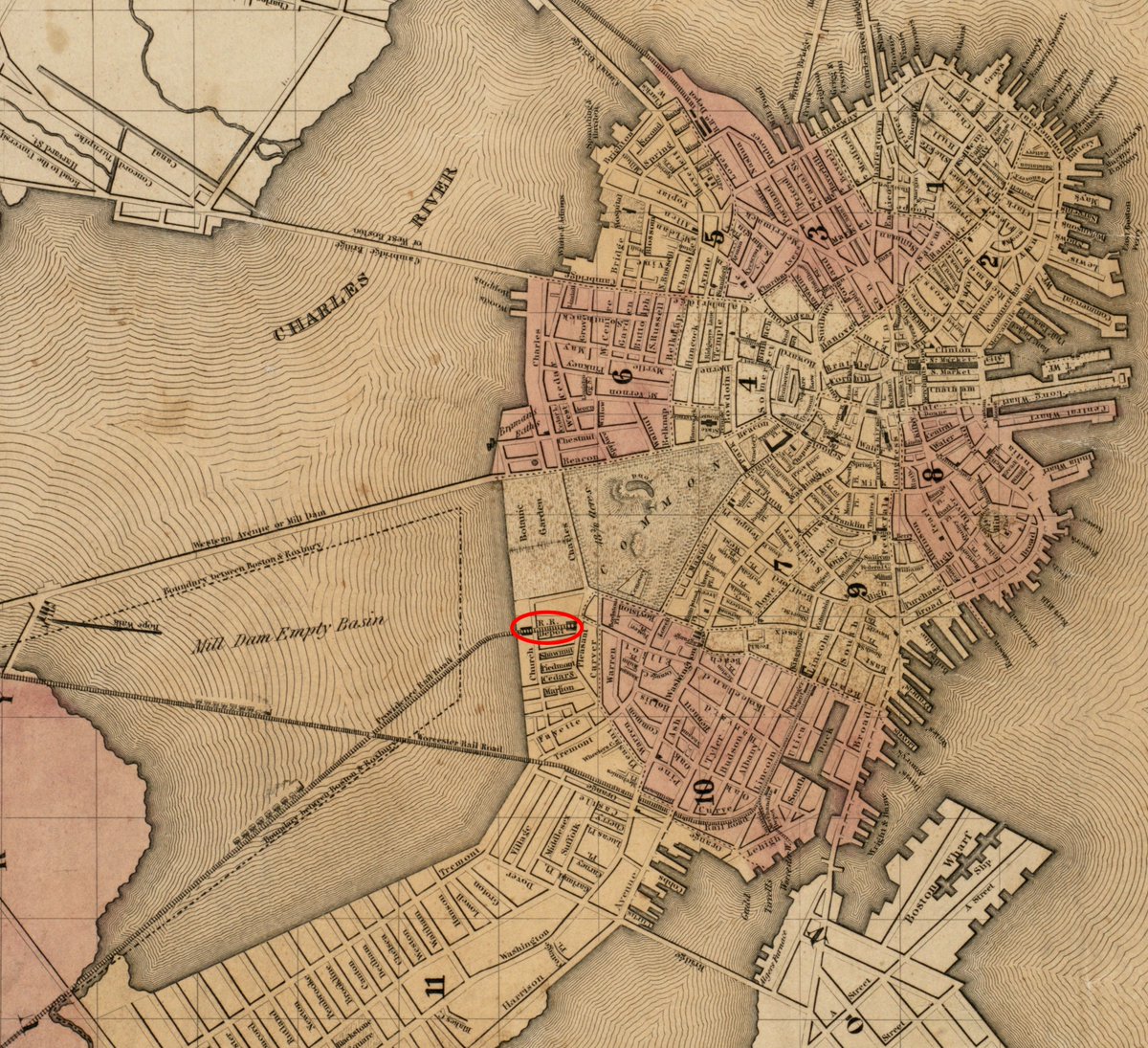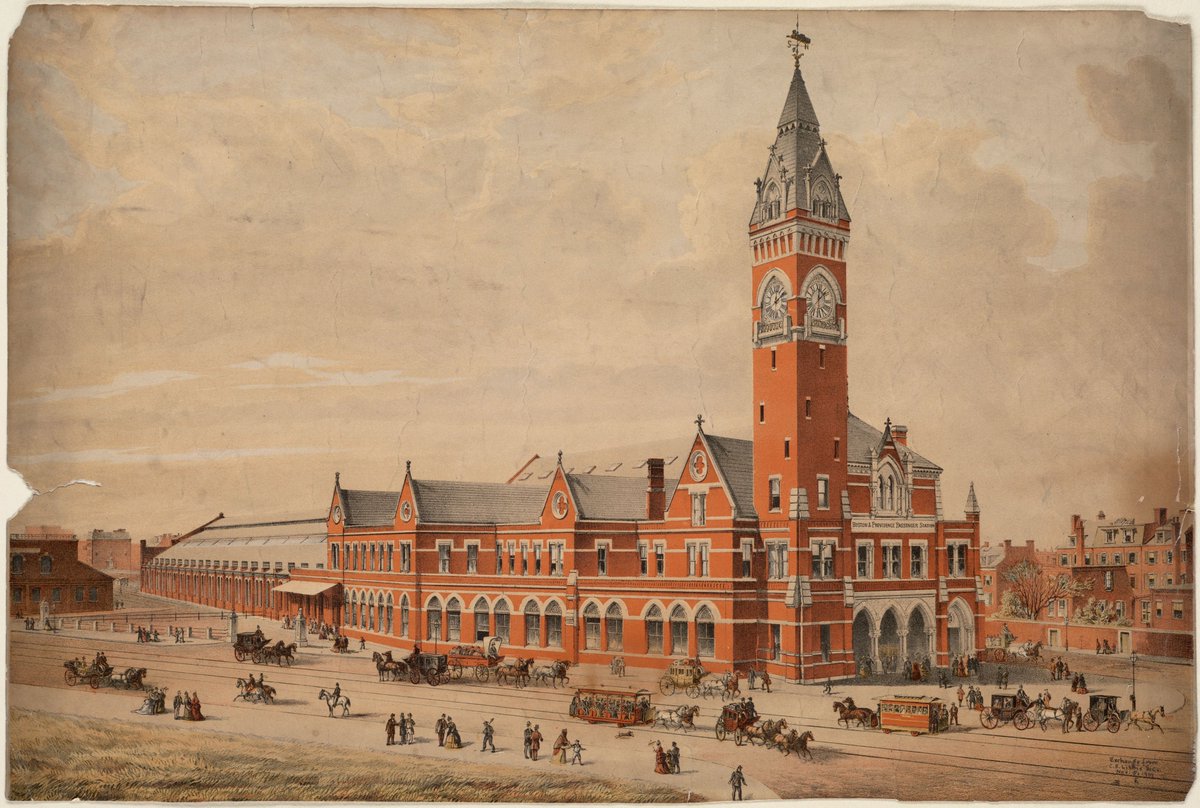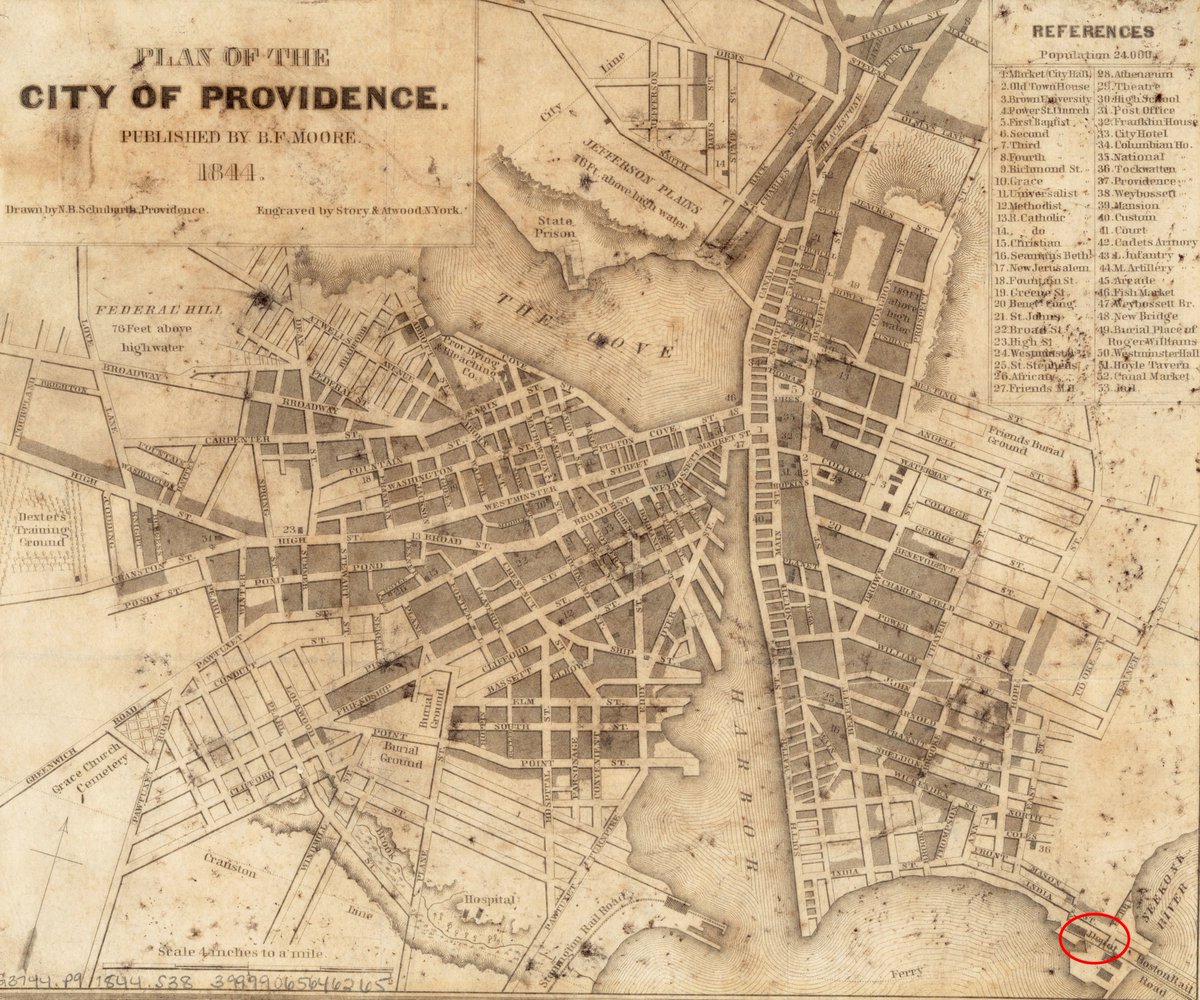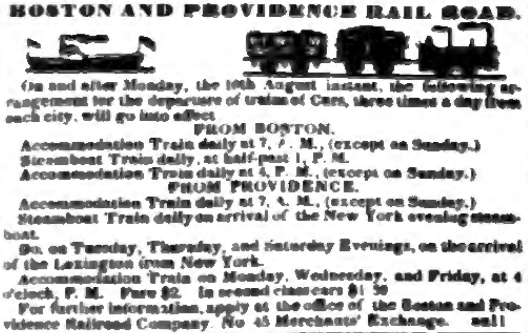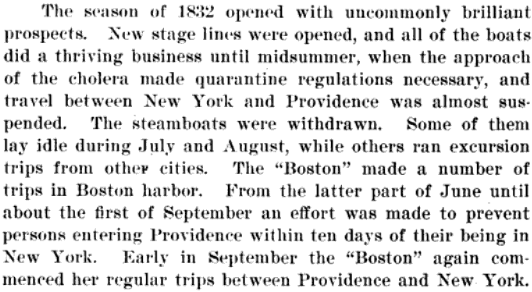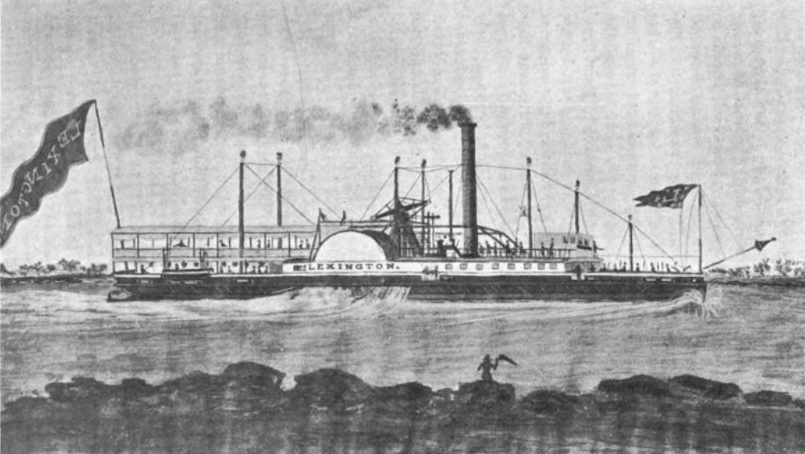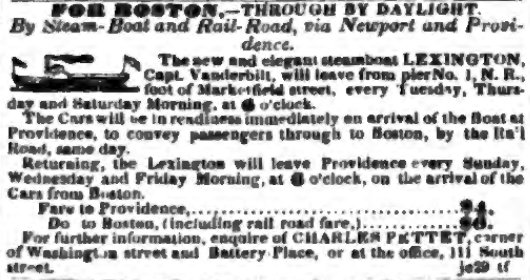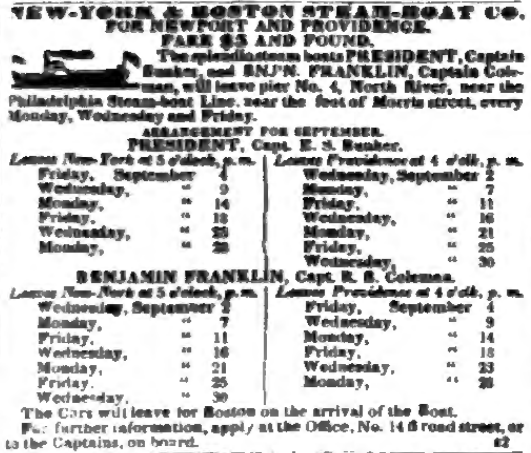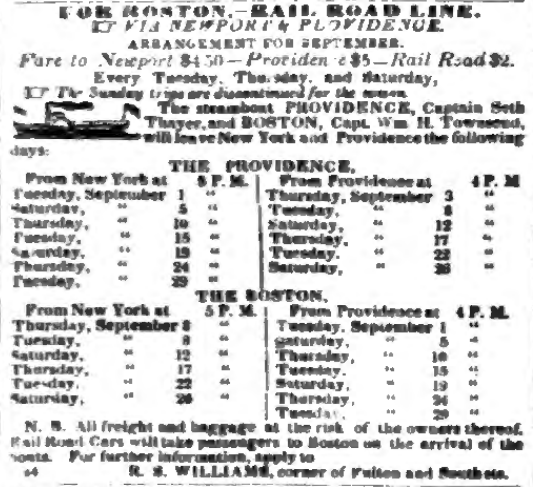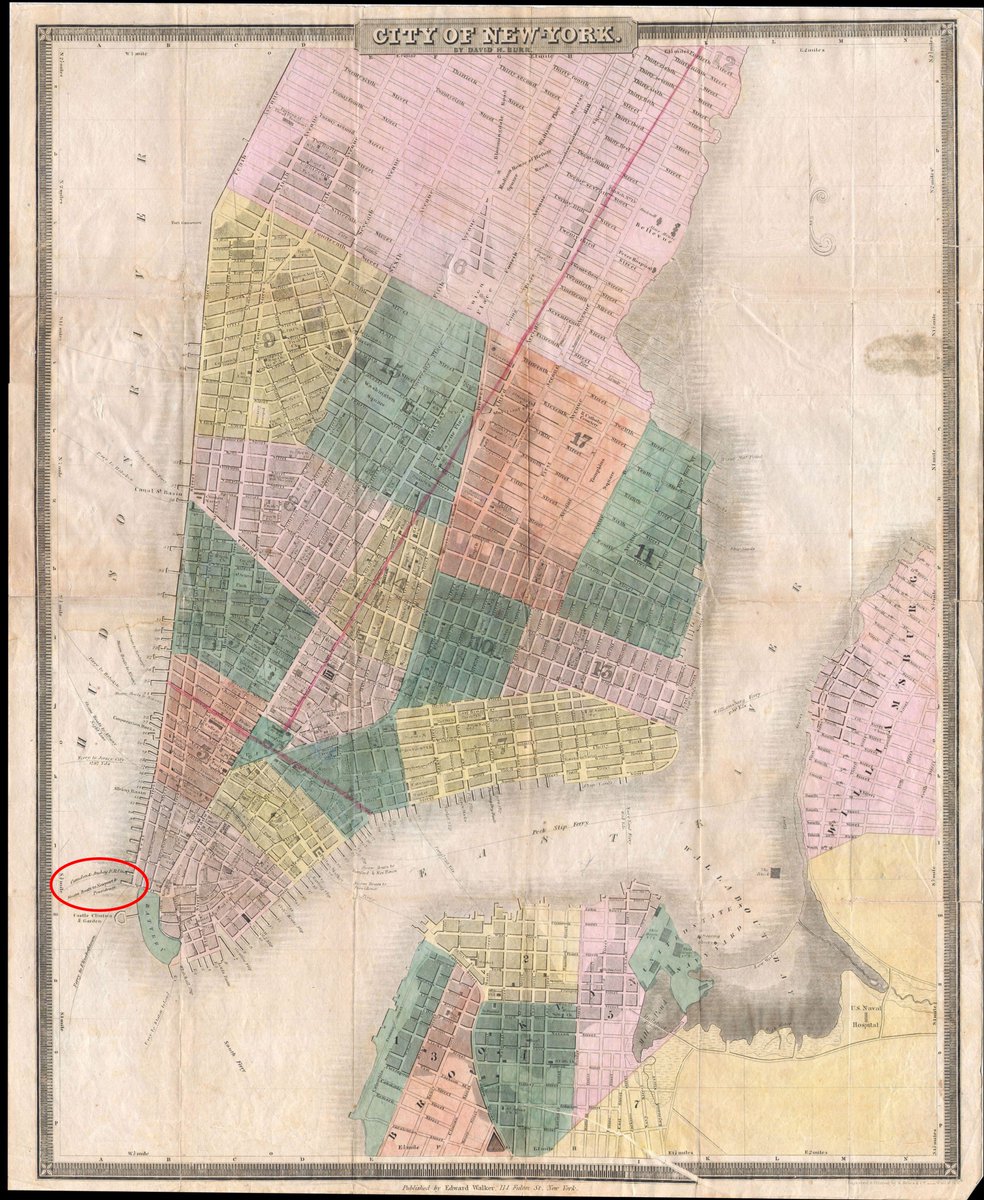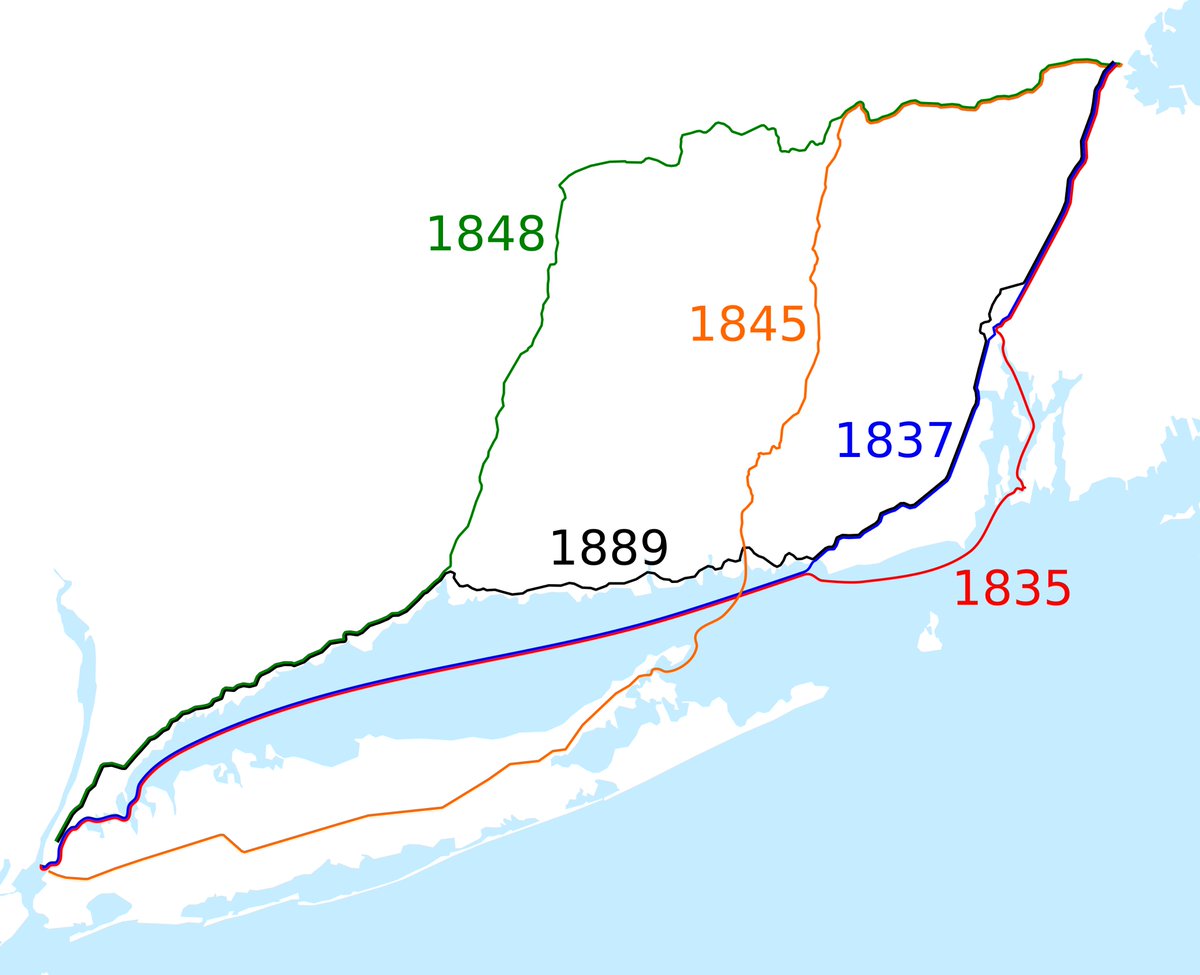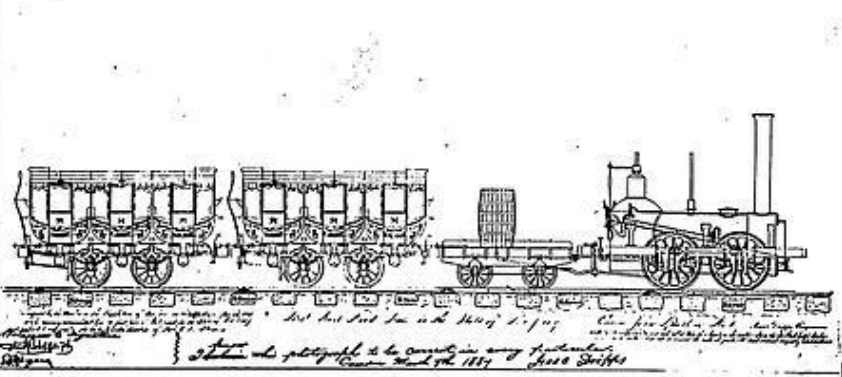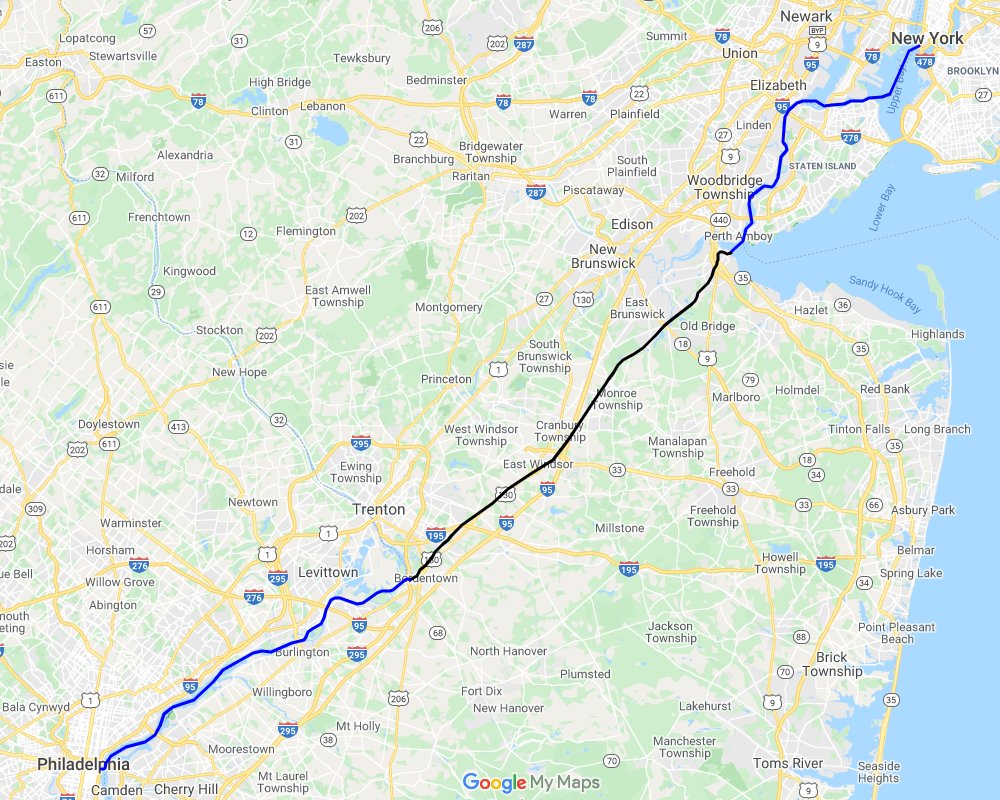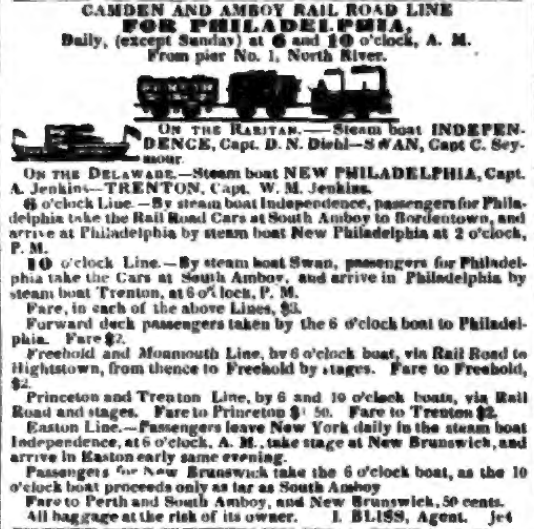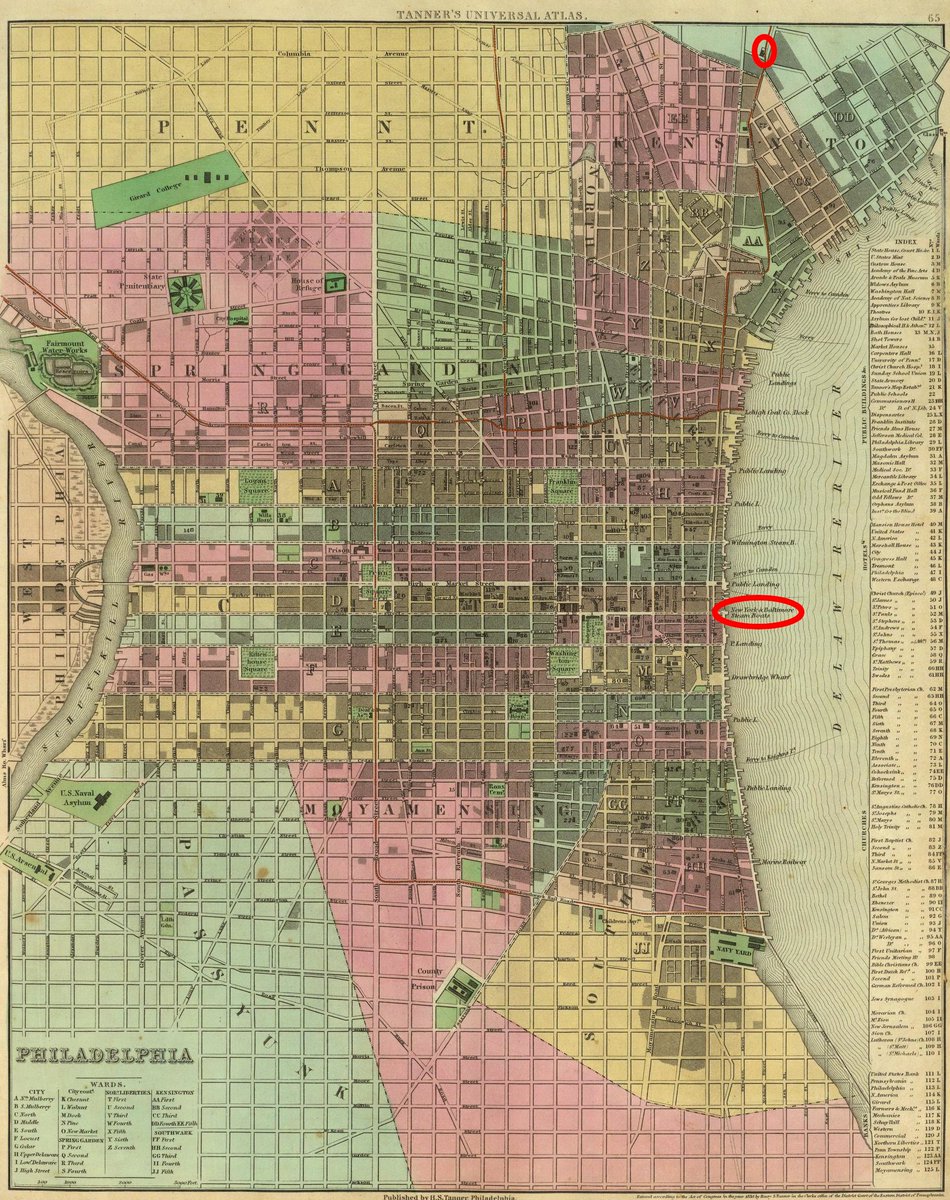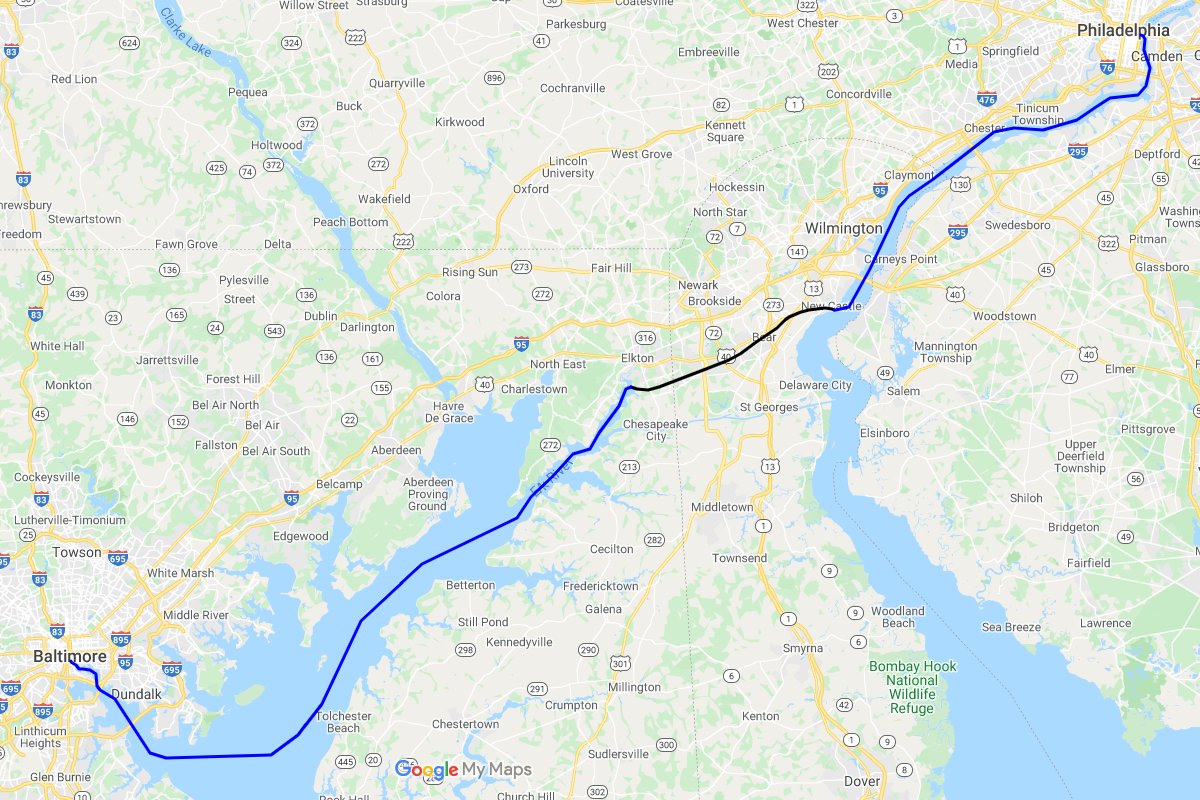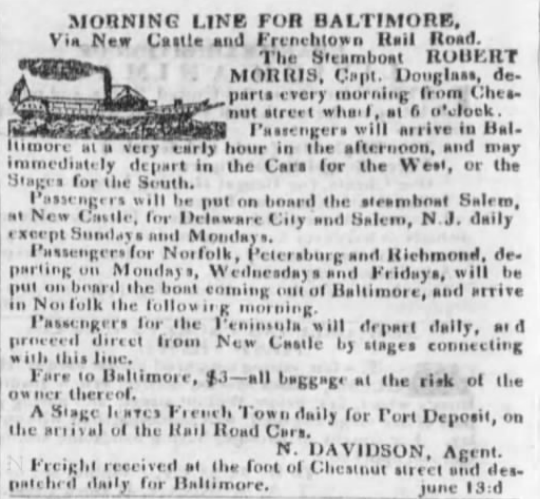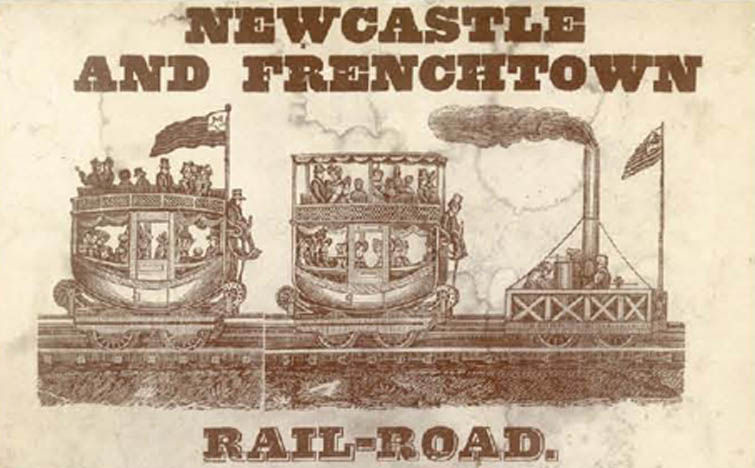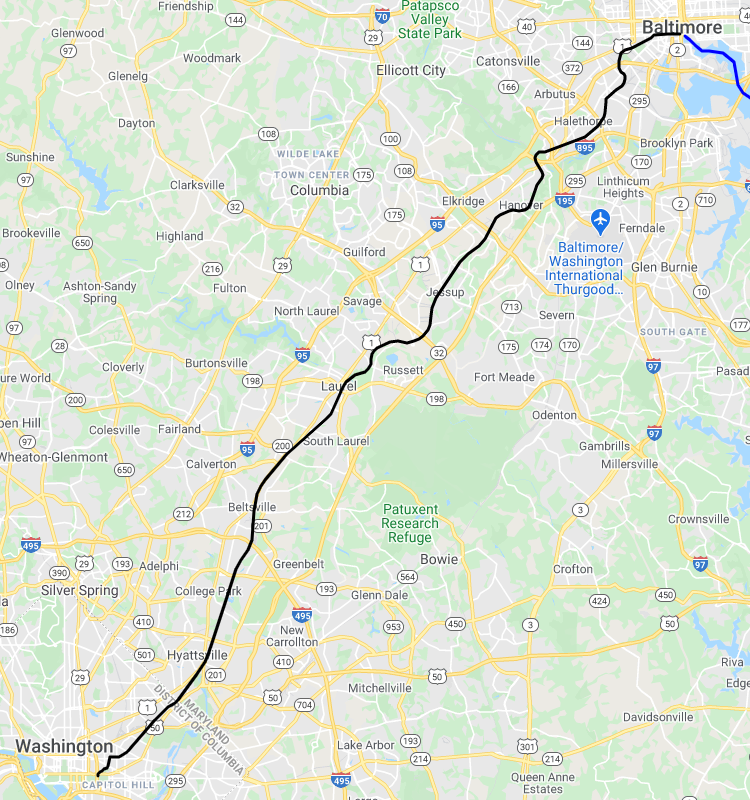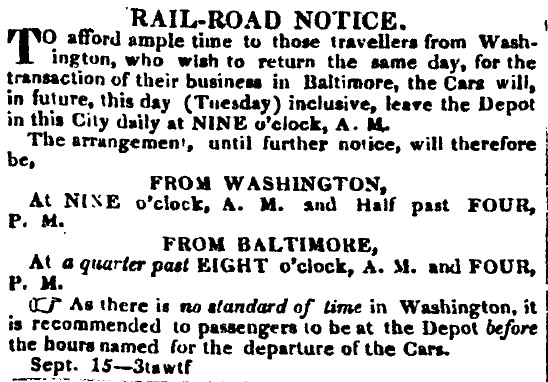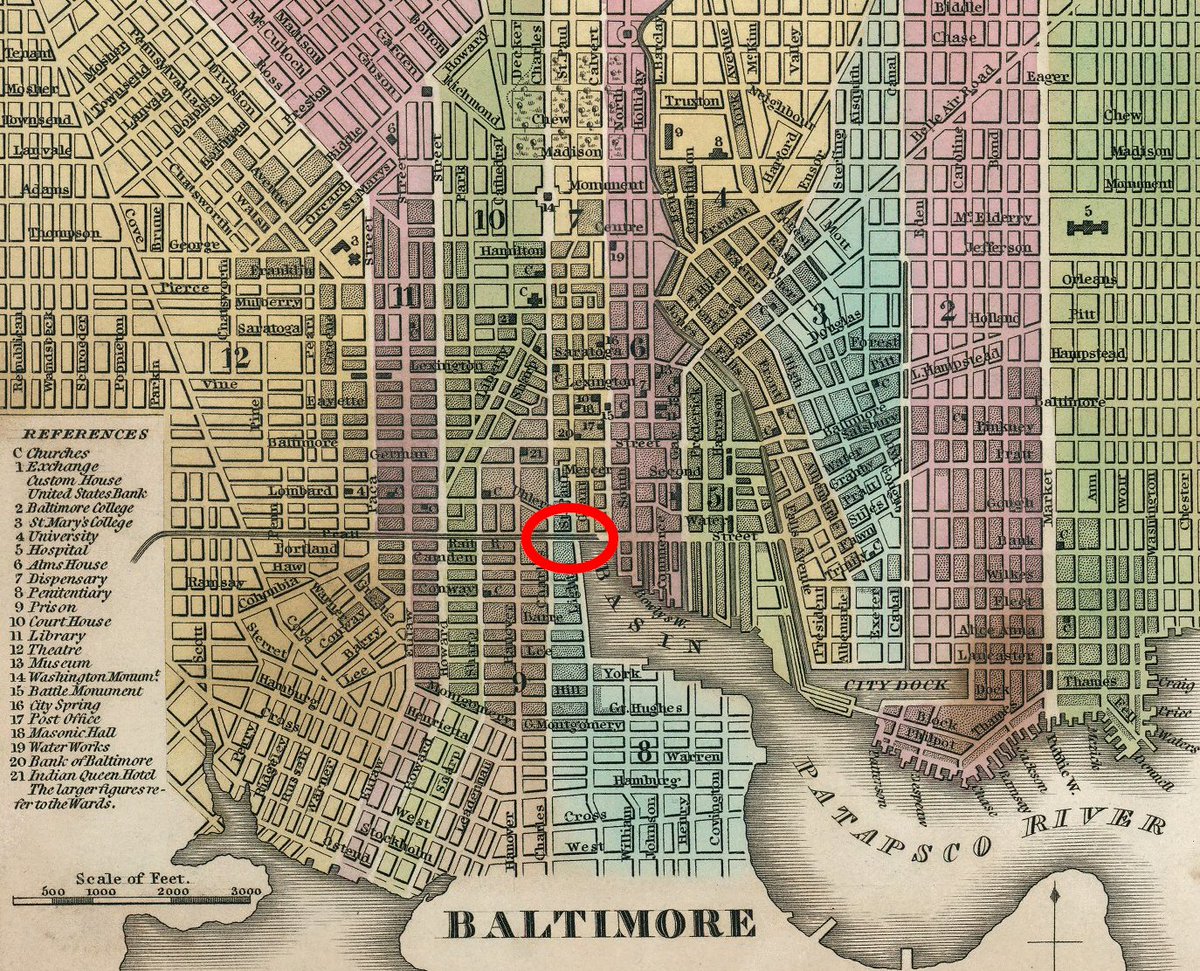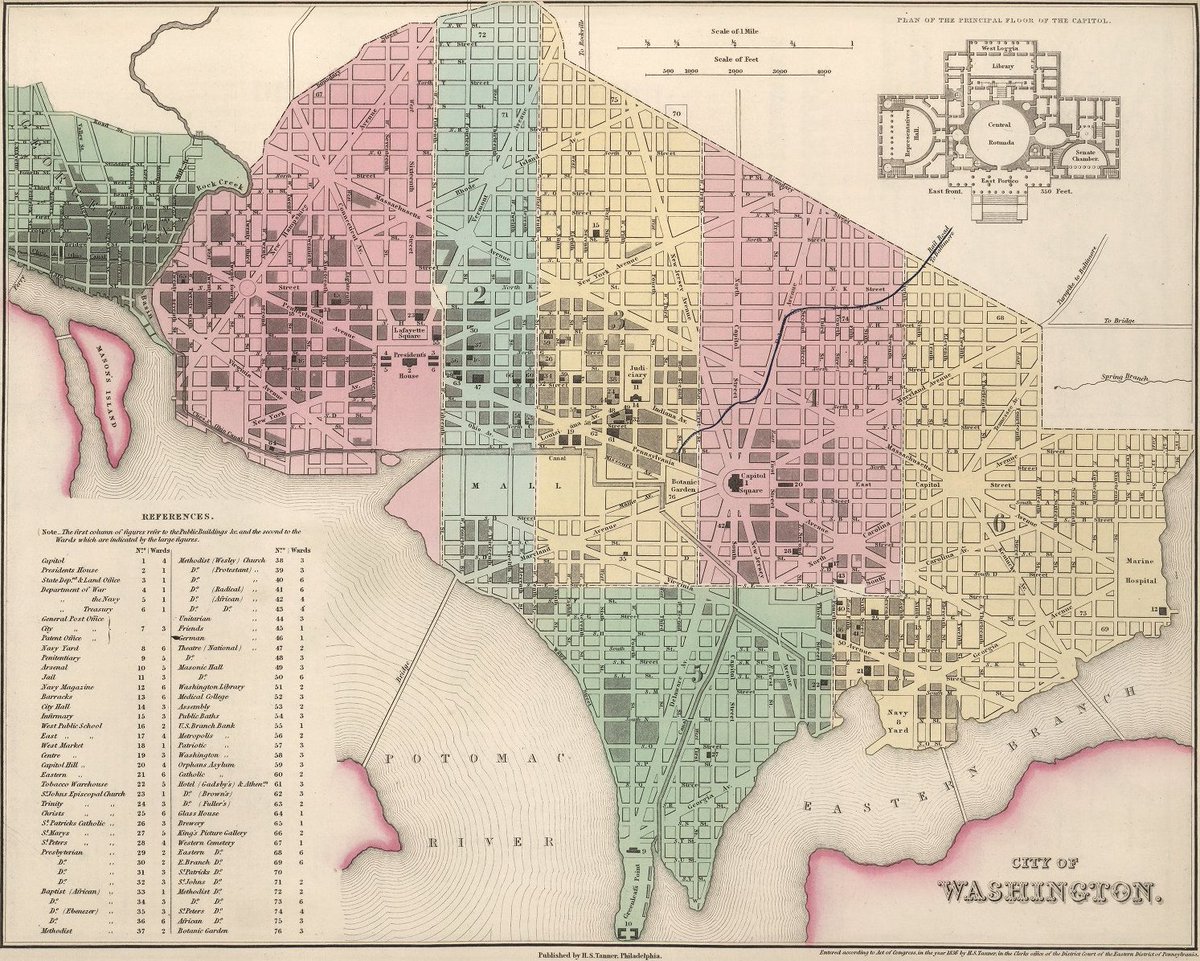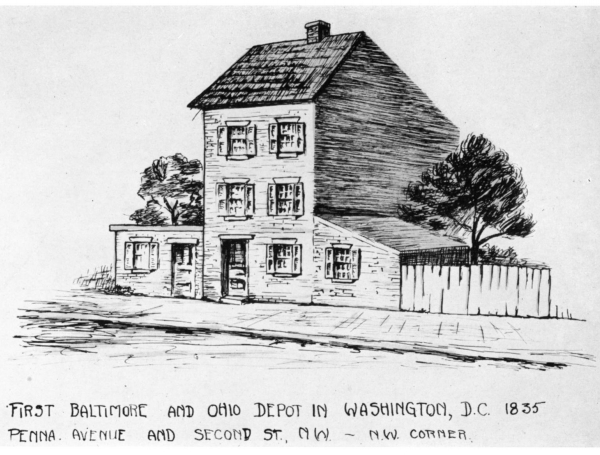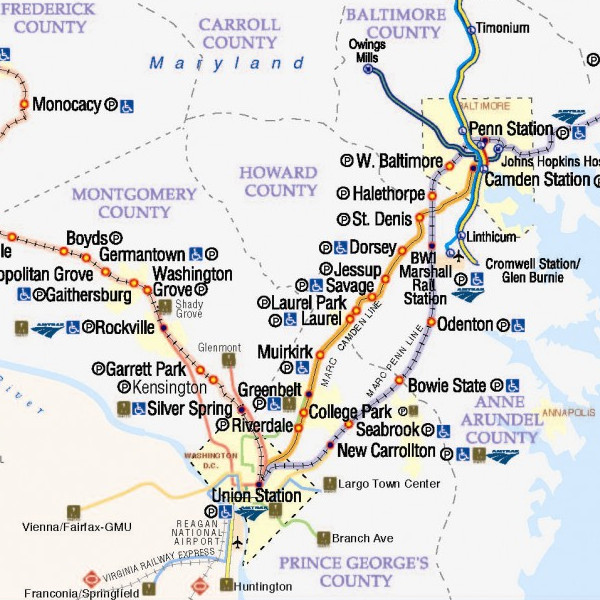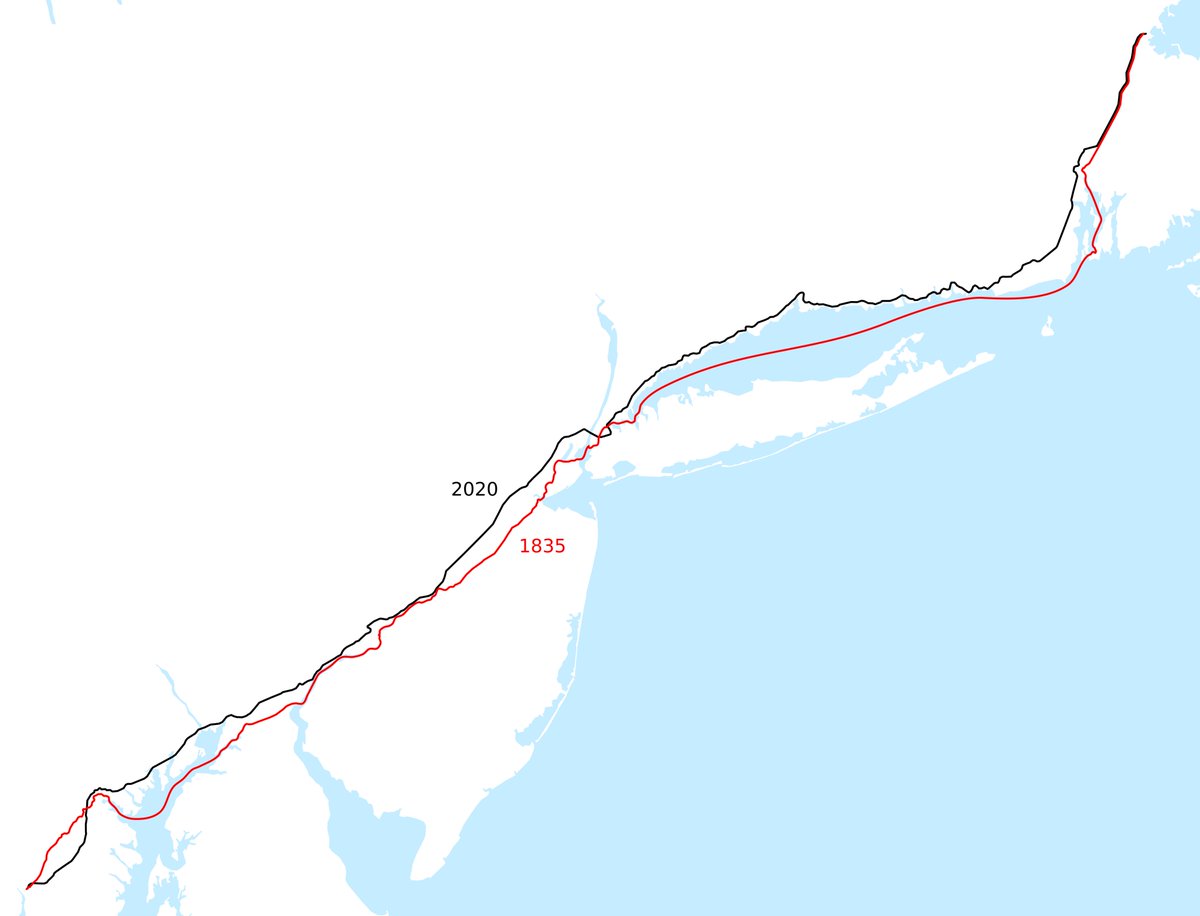In 1835 it became possible for the first time to travel the length of the Northeast Corridor, from Boston to DC, by rail & regularly-scheduled steamboat (previously slow horsedrawn stagecoaches were required). The route, however, was almost entirely different from today.
The northernmost segment, from Boston to Providence, opened in July 1835, & is the the only part of the 1835 route that is still mostly part of the Northeast Corridor. It includes what is today the fastest segment of the corridor (near Mansfield) & the 615ft stone Canton Viaduct.
Trains used Park Square station (southwest of Boston Common) from opening until rerouted to today's South (Union) Station in 1899. At the Providence end, trains ran to a waterfront terminal at Fox Point (1.5 miles southeast of downtown) until shifted to the current route in 1847.
In 1835 Boston-Providence was the most frequent part of the corridor, with 3 weekday trains in each direction, two for local service at 7am & 4pm and one (leaving Boston 1:30pm) timed to connect with Providence-NYC steamboats. Running time about 2h15m, fare $2 (2nd class $1.50).
Steamboats had run between NYC & Providence (usually stopping at Newport) since 1822, & by summer 1835 they ran daily. There was fierce competition between different companies on the route; fares ranged from $1 to $7 in 1835-36 due to price wars (but $5 was typical).
Aside: New York-Providence steamboat service was suspended in summer 1832 due to a cholera epidemic, to ensure that people wouldn't be in Providence within 10 days of being in New York. (from https://books.google.com/books?id=Q5tDAAAAIAAJ)
In 1835 the fastest boat on the route was the Lexington, owned by Cornelius Vanderbilt (later railroad magnate but in 1835 only involved in steamboats), which could make the trip in under 12.5 hours, but was scheduled to leave Providence 6am before the first Boston train arrived.
A thru passenger from Boston would instead have to take one of the slower overnight steamboats, which took over 14 hours, leaving Providence 4pm & arriving Pier 4 North River, Manhattan after 6am next morning. (Remember to set your watch back; Boston was 12 minutes ahead of NYC.)
It would take many years to complete the modern all-rail route NYC-Boston. The Providence-Stonington line opened 1837, shortening the steamboat segment, and c.1845 the fastest route briefly involved the Long Island Railroad to Greenport & steamboat from there to Connecticut.
The New York & New Haven RR opened 1848, final link in an all-rail inland route via Springfield. Most of the shore line east from New Haven opened 1850s but required ferries at Saybrook & New London; it wasn't until 1889 that the Thames River Bridge made today's route fastest.
Continuing onward towards Philadelphia, the primary route as of 1835 was provided by the Camden & Amboy Railroad (opened 1832 with trains pulled by horses, switching to steam locomotive power in 1833).
Like stagecoach lines before it, it used steamboats where possible, from NYC to South Amboy & from Bordentown to Philadelphia, crossing only the narrow 'waist' of NJ on land. (Trains instead continued to a ferry at Camden in winter when ice impeded navigation on the Delaware.)
As of 1835 the C&A ran two trips daily trips in each direction, leaving the terminals (Pier 1 North River, NYC and Chestnut St Wharf, Philadelphia) at 6am & 10am. End to end the journey took about 8 hours & cost $3 ($2 for forward deck places).
Parts of the modern NYC-Philadelphia rail route were already open in 1835; Newark-Elizabeth opened in December and Trenton-Kensington (on the northeast outskirts of Philadelphia) had opened 1834. Trains ran thru from Jersey City to Trenton (and Bordentown/Camden) by 1839.
The Kensington terminal's poor location meant the route to Camden (using the C&A track south of Bordentown) remained busier until the link to West Philadelphia (today's 30th St Station) opened 1867. A short boat ride was required at the NYC end until Penn Station opened 1910.
In 1835 a traveller continuing south from Philadelphia would need to spend the night before catching the daily 6am steamboat to Newcastle DE, the Newcastle & Frenchtown RR (opened 1831) across to Chesapeake Bay, & another steamboat to Baltimore, arriving about 3pm (thru fare $3).
Travel from Philadelphia to Baltimore would get much simpler the next year (1836) when the Philadelphia, Wilmington & Baltimore Railroad opened on essentially the modern route (though a ferry was still required to cross the Susquehanna River until 1866).
Finally, in August 1835 the Baltimore & Ohio Railroad opened its Washington Branch from Baltimore to Washington DC. Two daily trains in each direction (8:15am & 4pm southbound, 9am & 4:30pm northbound) made the journey in about 2.5 hours, fare $2.50.
Trains began at the B&O depot near the harbor at Pratt & Light Streets, and were hauled by horses about a mile down Pratt St to Mount Clare (current site of the B&O Railroad Museum) where a steam locomotive was attached for the rest of the trip to DC.
They joined the route of today's MARC Camden Line in West Baltimore & followed it to DC. Within the District they followed (the routes of today's) West Virginia Ave, I St NE, Delaware Ave & Louisiana Ave to a station at Pennsylvania Ave & 2nd St NW, just northwest of the Capitol.
(While the 1835-built B&O Washington Branch is still mostly served by the MARC Camden Line, today Amtrak trains take the 'Penn Line' route built by the Pennsylvania Railroad-controlled Baltimore & Potomac Railroad in 1872 to compete with the B&O.)
Thus, in 1835 one could leave Boston by train at 1:30pm, board a steamboat in Providence at 4pm, arrive Manhattan in time for a 10am departure to Philadelphia, overnight there & continue at 6am to Baltimore, onward at 4pm to DC, & arrive there around 6:30pm.

 Read on Twitter
Read on Twitter